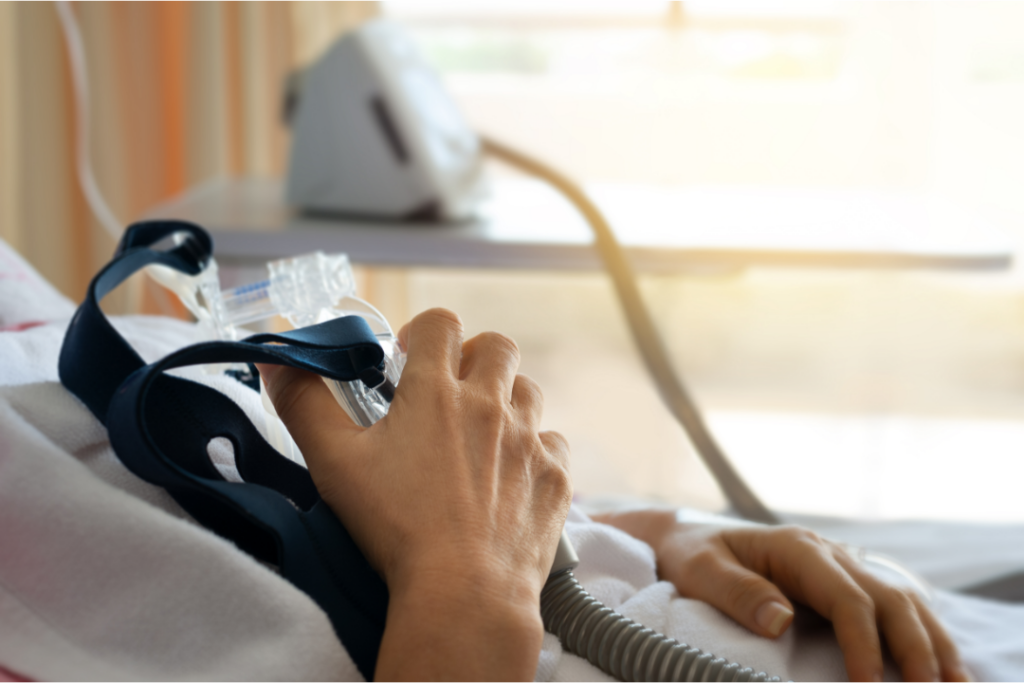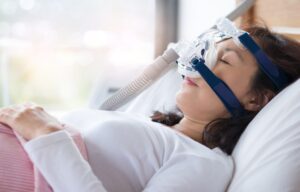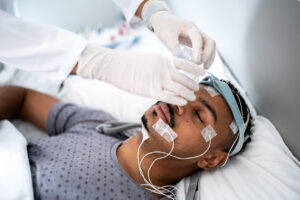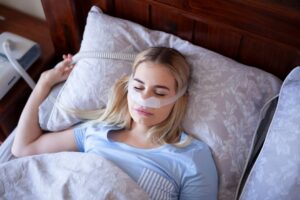What to know about CPAP Masks for Sleep Apnea

The continuous positive airway pressure (CPAP) Machine comprises the CPAP mask, which helps overcome the challenges of obtrusive sleep apnea. It is the most common treatment for sleep apnea in that it helps to keep the airway open and prevents it from collapsing.

Also, the throat and airway can optimally receive oxygen for optimum breathing and quality sleep. As a result, the CPAP machine is effective in helping your sleep quality and reducing the risk of diseases and other health issues such as stroke and heart disease.
What is a CPAP mask?
A CPAP mask is part of the CPAP machine used for treating sleep apnea in patients who cannot sleep. this device controls the pressurized air in the channel and works it through the tube. The tube is also connected to the CPAP masks that you wear when you are about to sleep. In addition to the general principle, you should also learn what the best CPAP mask machine is used for.

What is the use of the CPAP device?
The CPAP is a machine that can help to treat patients suffering from obtrusive and central sleep apnea. When a patent is suffering from any of the above disorders, it is often accompanied by interrupted breathing during the sleep cycle as a result of low oxygen supply. When this situation occurs multiple times in the night, the person will not be able to sleep.
Also, it can occur hundreds of times that night because the shortage of oxygen could cause multiple complications to health. In addition, it can raise the risk of high blood pressure, stroke, heart disease, diabetes, and other health issues in the person who cannot sleep. The CPAP mask, with the different parts of the machine, helps to keep the airways open while delivering air consistently through the mouth and nose.
Different types of CPAP machines
There are many Positive Airway Pressure (PAP) machines, and the CPAP is just one of the many options. However, it is clear that the CPAP device is the commonest of all these health devices and comes with its varieties.
The Bi-level PAP
The peculiarity of the Bi-level PAP machine is that it has two different pressures. One for the inhalation process and the other for exhalation.
The Auto CPAP
The Auto-CPAPA is different in that it can regulate itself for the required pressure to perform at the optimum level. The device ensures the airways get the proper pressure to maintain an open airway. As a result, the user can have a comfortable and sound sleep.
Adaptive servo-ventilation (ASV)
ASV is an efficient machine handy for people with central sleep apnea. The ASV maintains an open airway that ensures a breath of air flows through to the user’s lungs.
The Different Types of CPAP Masks
Now that we understand the types of CPAP machines, it is crucial to understand the different types of CPAP masks out there. There are several types of CPAP masks ranging from simple ones to complex ones for other patients with diverse conditions.
Which CPAP mask you choose depends on the comfort level you want to get and what your predominant sleeping habits are. The type of CPAP mask you eventually select may also depend on the kind of sleep apnea you suffer from.
Nasal mask

The nasal mask is a face mask as part of the CPAP machine that only covers the nose. It is often recommended for patients who move around a lot while sleeping. They find this type of CPAP mask to be very comfortable and flexible for use.
Nasal Pillow mask
The second category of CPAP masks we will look at is the nasal pillow mask that does not cover the entire nose of the user. Instead, the nasal mask only covers the nostril area. It has different options, including prongs that ideally enter your nostrils to enhance their sleep quality. Patients who wear the pillow mask can also use eyeglasses when reading or even watch TV while the CPAP mask is on.
Full mask
The third type of CPAP mask is the triangular-shaped mask that covers the face, including the nose and mouth, this type of mask is a perfect choice for people who breathe through their mouth when sleeping. As a result, the mask can serve two purposes; preventing sleep apnea and simultaneously snoring. In addition, the healthcare provider can recommend this choice of CPPA mask if you struggle to breathe due to nasal blockage.
How does the CPAP work?
The basic principle of work in the CPAP is to take room air, filter it and pressurize it through a tube and the CPAP mask. The machine effectively delivers pressurized air into the patient’s airways, keeping them open. When air continues to flow through this channel, the process keeps the uvula, the soft palate, and the tongue from shifting too far into the airway. CPAP masks also stabilize the breathing process while improving the overall quality of sleep.
If you feel uncomfortable, you can freely contact your sleep specialist. Or if you feel claustrophobic while having sleep therapy, you are free to notify the sleep coach. Choosing the right CPAP masks should help you overcome obstructive sleep apnea by ensuring your airway gets the constant air pressure needed for quality sleep. Your sleeping position also does not matter; you can get the best CPAP mask fit for you.
How to clean the machine
Always keeping the CPAP clean from dirt and germs, which could cause harm is essential. Cleaning the device helps avoid breeding bacteria in the usually warm and moist channels. The user must regularly clean the CPAP mask, tube, and water chamber when using the machine.

While you are free to choose the frequency that works best for you, cleaning the machine at least once a week is recommended. Similarly, it is vital to follow the cleaning instructions that the manufacturer provides. In addition, when cleaning the CPAP device, including the CPAP masks, there are general rules that could serve as guidelines.
Disassemble the CPAP
Learn to unplug the device and remove the parts according to the manual. First, remove the CPAP mask and the headgear from the tubing. Next is to remove the rube from the CPAP machine and the water chamber from the device. CPAP users must learn to do this process carefully.
Soak all the machine parts
Fill a basin with some warm water and add some amount of mild dish soap. Then soak all the disassembled components into the solution, including the tube, sleep apnea masks, and the headgear with forehead support. Let the part soak for like 3 minutes before rinsing. Then you can allow the pieces to dry in clean air. You can also use a soft cloth to wipe down the external surfaces of the CPAP device.
Reassemble your CPAP machine
After drying the washed parts and cleaning the machine, you can reassemble the device. Test the machine after reassembling it to ensure that it is working perfectly. Remember to tighten all loose ends to avoid air leakage. Otherwise, you will need a seal to close it up. The goal is for CPAP treatment to lead to the ability to breathe comfortably.
Clean the humidifier weekly
Cleaning the humidifier should occur at least once weekly when you use warm and mild soap. Then you leave the humidifier to air dry. Ensure you use distilled water always when running through the humidifier to remove the possibility of trapping germs and dirt. Remember, the humidifier controls the air pressure to suit the user’s needs.
Conclusion
Finally, a comfortable sleep is possible, but the mask user must first find the best sleep apnea mask of all CPAP masks available in the market. Next, the CPAP masks must be one that can efficiently stop obstructive sleep apnea while allowing users to wear glasses and watch TV for those who still want. But the nasal pillow masks are more suitable for such purposes. Finally, remember that the CPAP masks help to maintain air pressure. In contrast, the automatic ones can either reduce or increase the pressure. However, you will need a sleep specialist to help you achieve comfortable sleep with the best CPAP mask.
Also Read: 8 Things to Know About CPAP Masks Before You Buy One



